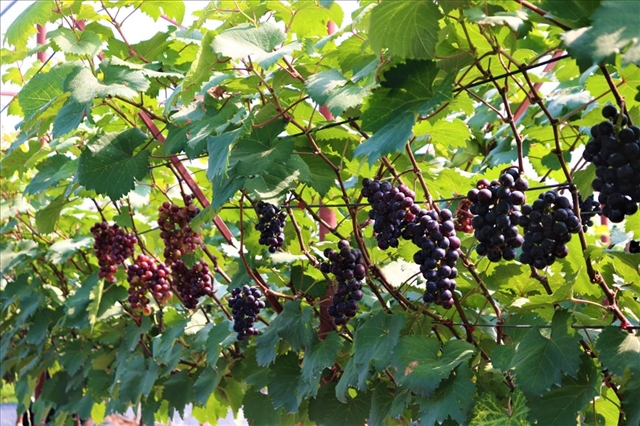With its advantageous terrain and fertile soil from large rivers flowing through, Hà Nội not only excels in ecological and green agriculture but also possesses resources to develop agricultural tourism.

Visitors view bonsai in Hồng Vân Commune. — Photo danviet.vn
With its advantageous terrain and fertile soil from large rivers, Hà Nội not only excels in ecological and green agriculture but also possesses resources to develop agritourism.
One shining example of this is the tour to view ornamental plants in Hồng Vân Commune in the outskirts district of Thường Tín. Capitalising on its location along the Red River, Hồng Vân has emerged as an appealing eco-agro-tourism in the city.
The commune boasts 21 main roads, each adorned with a different flower species, and the streets themselves are named after these flowers.
Visitors to Hồng Vân Commune can ride bicycles through these flower-themed streets, explore vegetable and flower gardens, and immerse themselves in the vibrant fields of colourful flowers and fruits, savour local specialties, and listen to stories of various historical sites.
Nguyễn Hải Đăng, secretary of Hồng Vân Commune's Party Committee, said that the commune has around 20 eco-tourism models that provide experiential services intertwining green and agricultural tourism.
"Each year, the commune welcomes 15,000 to 20,000 visitors, contributing to the stability of job opportunities for hundreds of workers who earn monthly incomes ranging from VNĐ6 million to 8 million per person," Đăng said.

Tourists visit a flower and ornamental plant garden in Hồng Vân Commune. — Photo kinhtedothi.vn
"Since the development of tourism, household economies have improved significantly. Tourists visiting the area have the opportunity to enter people's homes, capture moments with flowers and ornamental plants, engage in hands-on trimming of ornamental plants, and even pick fresh vegetables to bring home as gifts," Bùi Thị Thảo, a resident of Xâm Xuyên Village in Hồng Vân Commune, said.
In addition to the appreciation of rustic products, the commune's cooperative has also established a production line of medicinal herbal teas. These products have received high praise from the Hà Nội People's Committee and have been awarded a 4-star OCOP (One Commune One Product) rating.
Similarly, in Đan Phượng District, several riverside ecological agriculture models have been established, gradually transforming into popular tourist destinations.
Nguyễn Hữu Kỳ, the owner of the Hạ Đen vineyard, said that these grape varieties hold significant economic value. In addition to selling grapes, his family also combines sightseeing and experiential travel with product sales at their garden.

Vistors come to visit and experience a vineyard in Đan Phượng District. — Photo laodong.vn
Đan Phượng District also offers various eco-tourism and agritourism models that have recently attracted tourists.
Nguyễn Thạch Hùng, vice chairman of Đan Phượng District's People's Committee, revealed that, as per the plan, village clusters along the Red River and the Đáy River continue to practice traditional farming while simultaneously developing eco-tourism.
At present, Hà Nội City has two rural tourism OCOP products: the Hồng Vân village service tourist destination in Hồng Vân Commune, and the Phù Đổng Green Park ecological area in Phù Đổng Commune, Gia Lâm District.
Additionally, the municipal authorities have recognised seven tourist destinations in suburban areas, which are associated with agriculture, rural life, craft villages, and eco-tourism.
Hà Nội has favourable conditions for the development of agritourism along its rivers. Specifically, the section of the Red River that flows through the city spans about 100km.

The model of growing grapes combined with agritourism is considered a new direction to help farmers develop economically. — Photo laodong.vn
Bùi Văn Sáng, chairman of Thanh Oai District's People's Committee, said that the Đáy River, which passes through Thanh Oai District, stretches for about 17km and is bordered by nine communes. In the socio-economic development plan for the period 2021-2025, the district aims to develop the area along the Đáy River into an eco-tourism space, establishing a water tourism route on the river.
According to Tạ Văn Tường, deputy director of Hà Nội Department of Agriculture and Rural Development, the agriculture sector intends to focus on cultivating vegetables and fruit trees along the banks of the Red River, Đáy River, and Đuống River to safeguard Hà Nội's green belt while simultaneously promoting eco-tourism. VNS